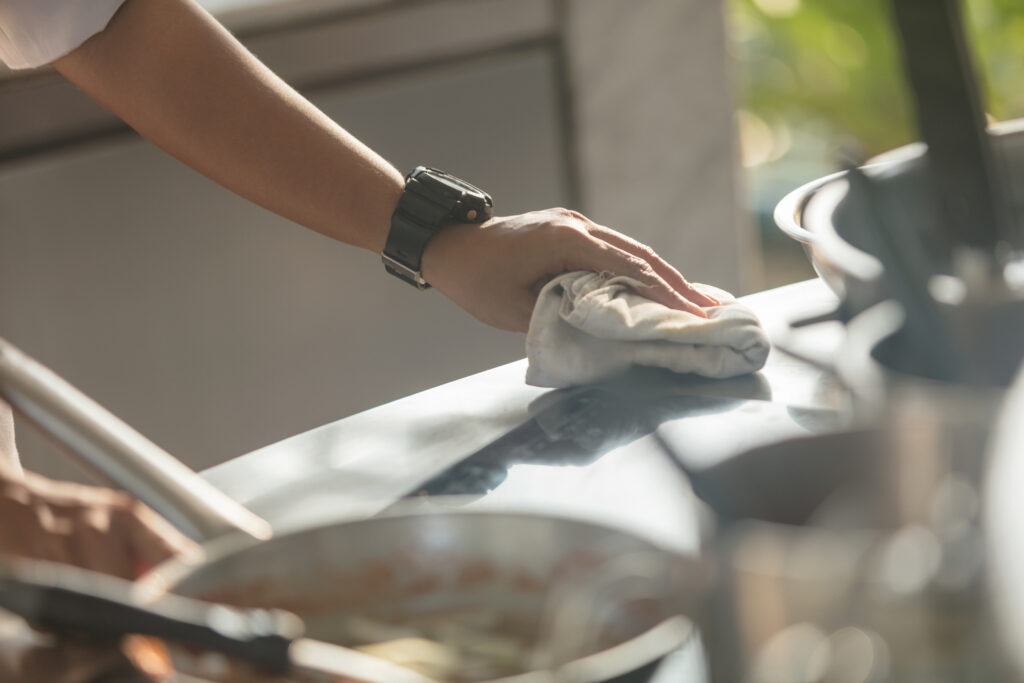
The importance of cleanliness, organization, and the 5S method
Cleanliness is the backbone of any real kitchen. As a private chef you don’t hit excellence without it. An organized, spotless kitchen isn’t just nice to have—it’s essential. I’d say a chef spends close to half their time cleaning, and honestly, it’s not just a chore; it’s a point of pride, a sign of professionalism.
Sure, we do it for the obvious reasons: health codes, preventing cross-contamination so that an apple doesn’t end up tasting like an onion. But we also do it for ourselves, for the flow, for efficiency.
Imagine you’re in the middle of a chaotic service, you need the salt, and you’re stuck asking, “Where’s the salt?” It’s not just the salt that’s missing—it’s order. And without order, you lose speed, you lose efficiency. Cleanliness and order are a partnership, a necessary rhythm. A clean kitchen is an organized kitchen. And an organized kitchen? That’s an efficient kitchen.
For private chefs, we’re always jumping into new kitchens, adapting fast. One trick that’s saved me more than once is the Japanese 5S method. Here’s how it goes:
Seiri: Sort unnecessary items
The first “S” translates from Japanese as “sort unnecessary items.” Upon arriving in any kitchen, the first thing I do is clear all the rarely-used appliances and utensils, storing them away. Blenders, toasters, buckets, jars, even vases are things I’ve come across in kitchens I’ve walked in. First step? Clear the decks.
Seiton: Set items in place
The second “S” emphasizes that once unnecessary items have been removed, it’s time to arrange the necessary ones—the tools and ingredients you’ll frequently use. Think about where you’ll place your knives, tea towels, dry ingredients, how you’ll organize the refrigerator, etc. Assign a spot for each thing, and keep it there. That way, when you need something, it’s there, every time.
Seiso: Shine (clean)
The third “S” encourages keeping the workspace and our tools clean and tidy at all times. Keep it shiny.
Seiketsu: Standardize and label anomalies
The fourth “S” invites us to identify processes that aren’t working within our system. We are looking for cracks in the system. Maybe washing wine glasses in the dishwasher isn’t working because they keep breaking. Fine. That’s a sign to adjust and start hand-washing those glasses instead.
Shitsuke: Sustain and improve
The fifth “S” promotes continuous improvement.. Identify anomalies and solve them. Find ways to eliminate more unnecessary items, organize necessary items better, or clean more effectively. This mindset keeps the kitchen evolving, getting better with each service.
From our expericne as private chefs, by the time you’ve hit the first two steps, you’re ready to cook. The third step (cleanliness) is a constant habit for efficient work, and the last two S’s should be the mindset that encourage continuous improvement. This approach gets you to reflect and prompts you to ask the right questions to make the next service even better.

